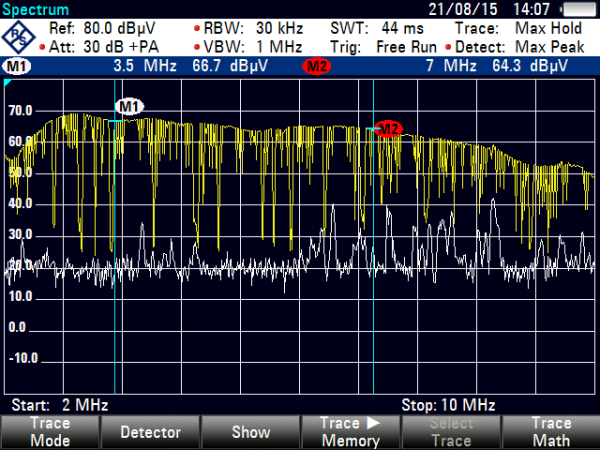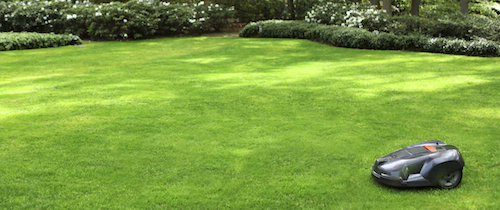Robotic lawn movers, . small autonomous robots, are becoming more and more popular in the gardens. With a minimum effort the garden is kept tidy, without the noise and emissions from a petrol engine. But how about EMC-related emissions then? And will the lawn mower co-exist with other products?
Elsäkerhetsverket, the Swedish National electrical safety board, is the authority taking care of the EMC directive in Sweden. This is done by market surveillance and inspections of installations and products in use. As the market for those lawn mowers expand, reports of EMC related problems start reaching us. In some crowded neighbourhoods lawn movers sometimes don’t get on with the neighbours‘ mower. Radio interference and problems with ADSL internet access has been reported.
Those reports have raised the interests of the authorities to do some market surveillance, this is usual practice.
How they work
These electrical lawn mowers are indeed quite sophisticated. They work (at least are they supposed to) within their own garden and when the batteries are getting exhausted they return to the charge station for some new energy. The charge station also produce a signal which is fed to a wire along the garden boundary. The lawn mower is searching for that signal and moves around in a random way within this area.
The wanted signal is of low frequency, some tenths of a kilohertz, and with a proper design there is no reason for EMC-related problems. The lawn mower itself is quite small and has no cables attached when operating so it shouldn’t be causing any trouble. The power supply seems to be of switch mode type, the usual EMC precautions apply but that’s nothing special today where almost all power supplies are switched.
Pre -tests
Four lawn mowers were bought and pre-tested at our premises. It soon became obvious that the boundary wire and its signals were the root cause of the EMC problems, at least for some of them with particularly one bad example. Signals were examined with a current probe and the signals looked very different, some models having a rather high level of radio frequency signals. This is most likely completely unnecessary and a sign of poor filtering at the signal output.
The worst model was tested in a real garden with a shortwave dipole antenna nearby. It was not surprising to see that a high level of RF signals at the boundary wire resulted in a high signal level in a receiver connected to the antenna.

Going further
Our pre-tests convinced us to perform full emissions tests on all lawn mowers purchased. This was performed by an EMC test lab. It was doubtful if the so called essential requirements in the EMC directive were fulfilled. The test report confirmed our suspicions, the result exceeded levels given in harmonised EMC standards. Most likely the product will be banned from the market, something which can also be motivated by our field test.
In the real world
As most residential areas are rather crowded it is very likely that high emissions levels like this can cause serious problems. Risk of radio interference is obvious, radio amateurs using short wave communications will probably suffer badly from the lawn mower showed here. Signals from the boundary wire can induce interference in telephone cables, the cause for the ADSL problems mentioned in the beginning.
Conclusion
This is a typical example of the need for the authorities to follow market trends and evaluate the products. It is always beneficial ta act proactive in order to avoid unnecessary problems. In most cases EMC problems can be avoided simply by proper design and awareness of their electromagnetic environments.
Following classic EMC measures, like zoning, filtering and shielding, compliance with the EMC directive protection requirements can be achieved. Finally, the EMC requirements are of course needed, together with market surveillance.
Henrik Olsson Elsäkerhetsverket


